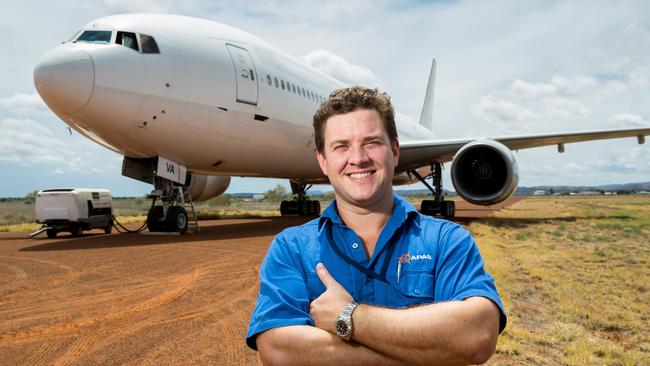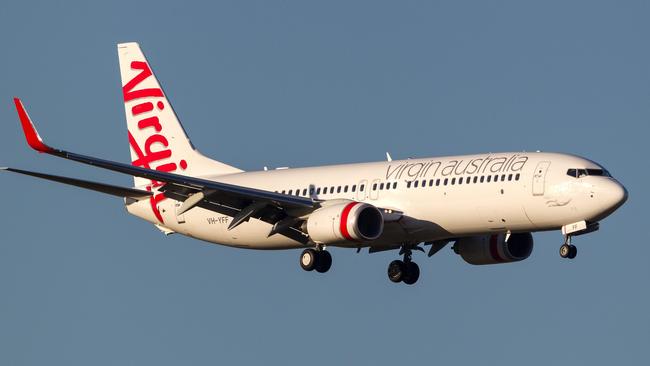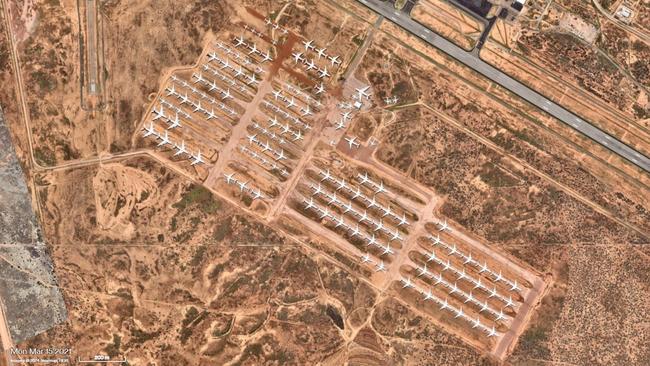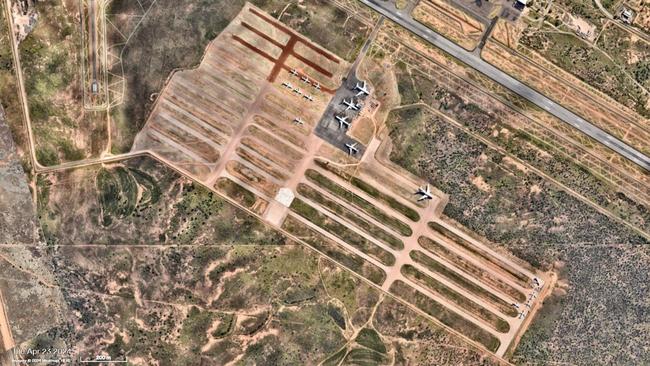Airlines facing shortage of planes as production woes keep older planes in the air
Once a sea of wings, the Red Centre’s aircraft storage facility has emptied out in a stark illustration of the current shortage of planes that is gripping airlines.

At the height of the Covid pandemic, the Asia Pacific Aircraft Storage facility at Alice Springs was full to bursting with more than 150 planes not needed by their operators.
Today, fewer than 20 aircraft are stored at the site in the Red Centre, in a stark illustration of a growing global plane shortage.
APAS managing director Tom Vincent said the slowdown in production of new aircraft and other supply chain problems meant airlines were hanging on to planes for longer than planned.
“Until airlines have certainty around delivery of new equipment, that’s a smart move,” he said.
“There’s significant issues with Boeing, Airbus has delivery issues and you’ve got big issues with Pratt & Whitney GTF 1100 engines. You’ve got to feel for the airlines.”

Virgin Australia was among those caught out by Boeing’s production dramas, with the delivery of new 737 Max 8s reduced from one a month to one every two to three months.
To date four of the 14 on order have arrived, with a fifth registered VH-8IF in transit.
Another three are expected by the end of the year, with the remaining six not arriving until next year.
Already the delivery slowdown has forced Virgin to extend the suspension of its Adelaide-Bali service indefinitely, and reduced resilience across its operations.
“We are working to minimise impacts to our schedule,” said a spokeswoman for Virgin Australia, which has struggled with on-time performance this year.
With the bulk of Qantas’s new aircraft orders sitting with Airbus, the carrier was not as exposed to production line issues, but had not escaped unscathed.

CEO Vanessa Hudson said the airline’s much anticipated Project Sunrise flights had been pushed back six months due to delays in the arrival of new A350- 1000ULRs, and new narrow bodies were a couple of months behind schedule.
“It’s impacting all airlines. It’s probably impacting Boeing more disproportionately at the moment than it is Airbus,” Ms Hudson told a Macquarie Australia forum. “Both manufacturers coming back to full production after Covid has been really challenging, particularly with supply chains and resourcing challenges.”
With a shortage of wide-body aircraft, Qantas was using two Finnair A330s to operate Sydney-Bangkok and Sydney-Singapore routes, crewed by Thai flight attendants and Finnish pilots.
The arrangement was due to continue until late 2025 when Qantas would use its own crew on the jets.


The difficulty sourcing aircraft was unlikely to help the position of budget carrier Bonza – currently without planes after lessors terminated the leases on four Boeing 737 Max 8s.
It was expected leasing company AIP Capital would quickly find a new home for the young aircraft, which are expected to be moved out of the country in coming weeks.
Mr Vincent said aircraft supply issues were being compounded by shortages of skilled staff, particularly engineers and pilots.
Despite the challenges on “almost every front”, he said the now 10-year-old storage facility maintained a staff of about 60 people, and remained busy.
While the market for aircraft storage has paused, the secondary parts market is booming, with APAS recently completing a “part-out” of an ex-Singapore Airlines A380.
“No one’s ever parted out an A380 in Australia before, and we’ll start a second A380 part-out in June or July,” he said.
Producing between 600 and 1500 components, the A380 parts would be tested and recertified for use in the secondary parts market.
“It’s a very large industry in itself and important when you’ve got issues around supply chain and the delivery of new components, whether they be engines or APUs,” Mr Vincent said. “That secondary parts market is critical.”






